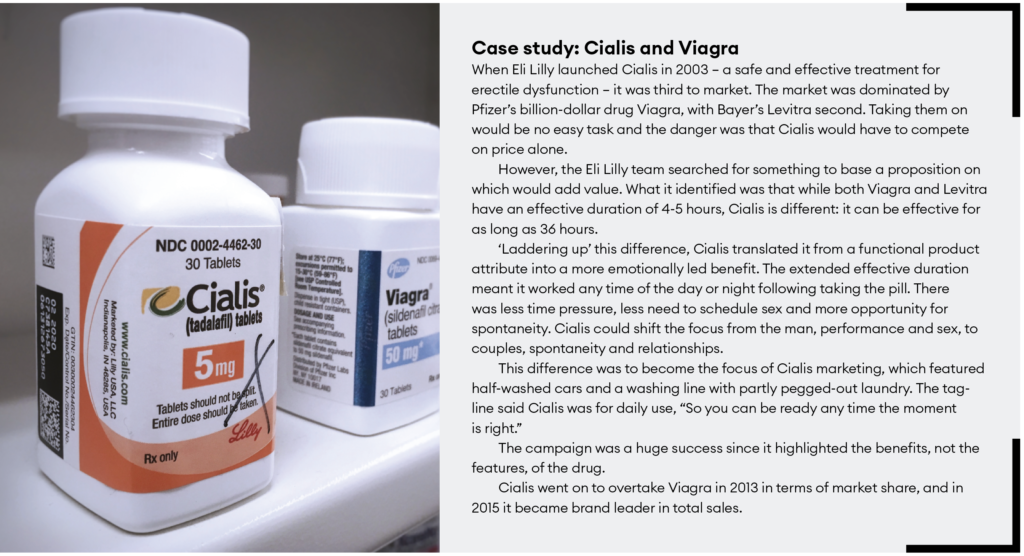Like any field, medicine needs great marketing. Giles Lury asks, how will it change after Covid-19?
As with many debates, arguments about what will happen after the Covid-19 crisis often quickly descend into the binary: everything will change, or nothing will change. It’s black or it’s white. When it comes to assessing the future of medical marketing there is the same temptation, not least because of the scale of Covid-19’s impact on public health and economies globally. Yet the truth probably lies somewhere in the middle, in shades of grey. As has happened in the wake of previous crises, there is likely to be a period where pre-existing trends in the marketplace accelerate.
My research across the medical marketing field points towards five trends which can be discerned in the existing landscape, the effects of which look set to be intensified by coronavirus.
1. The medtech revolution
We were already in a medtech revolution, which will continue and accelerate in the wake of Covid-19. Even while researchers rushed to find a vaccine – an essentially old-world medicine – medtech has played a major role in monitoring and tracking, both of which have proved to be vital tools in the fight against the virus. They have enabled those countries with more advanced systems, such as Germany, to get back to work sooner.
The medtech revolution, which incorporates artificial intelligence, virtual reality and augmented reality, wearables, the Internet of Things, gaming, in-home diagnosis and telemedicines, is certain to resume as a driving force in medical advancement.
Medicine is a sector that relies on hard science, but its devices and systems only become truly effective when they are bought into, and are used by the right people at the right time. This is something that even the best pieces of technology cannot achieve by themselves. Great medtech marketing is needed.
That will have to combine the rational and the emotional to understand, engage and persuade the hearts and minds of the multiple target groups that must be addressed. While Covid-19 may have increased people’s willingness to use teleconferencing and telemedicine, it is likely that they will continue to place greater trust in people than machines.
Implication Embrace technology but give it a “human face” and “human touch.”
2. A more complicated decision-making process
The old world of decisions being made directly between doctor and medical supplier is long gone and things will only get more complex.
Decisions are now dependent on a complex combination of governments, drug approval authorities, patients, practitioners, practice heads and procurement managers. Within each of these stakeholder groups there are different segments who need to be understood in ways that go well beyond disease and demographics.
Messaging during the early phases of Covid-19 show the danger of over-simplification. The UK’s early messaging was focused on telling the over-70s they were the group most at risk, yet the message fell on many deaf ears. I believe one of the reasons that it failed to convince members of this generation to stay inside was because they see themselves as fit, healthy and active: the advice was perceived to be for ‘other people over 70’. As marketers should know, segmentation needs to take account of attitudes, drivers and behaviors, not just demographics.
It will be even more important to identify the respective patient journeys: whether that’s to purchase and use a product, or a journey from diagnosis to treatment and hopefully cure.
Implication Not only are there more stakeholders on different journeys, but within each stakeholder group, there are multiple segments. There needs to be a better understanding of groups of individuals and their key drivers.
3. A focus on costs and value
Even before the recession that the world is now entering, continuous medical advances and the resulting ability to do more meant that funds were getting squeezed. The consequent focus on value – which may equate in some buyers’ minds simply with price – is another trend that will return with renewed vigor.
However, the true meaning of value doesn’t simply and exclusively relate to price. It is better defined as a prospective customer’s evaluation of the benefits and costs of one product or service when compared with others. The more worth attached to the benefits, and the more unique or distinctive they are, the more value is placed on their delivery – and therefore people will believe that they are worth paying more for and worth choosing over a competitor.
Developing and testing your proposition – your promise – will be key. A good proposition will need to be so much more than a list of features with a price tag. It should tap into the emotional as well as the functional and should be truly compelling to the customer. To paraphrase Marlon Brando’s Vito Corleone in The Godfather: it should be an offer they can’t refuse.
Implication The need to develop powerful insight-based propositions will be greater than ever.
4. Learning from other categories
Medical innovations have benefited from looking beyond their own world for inspiration. The collaborations that were formed during the Covid-19 crisis to develop new ideas and to do so quickly – like Dyson and TTP developing the CoVent ventilator – will further confirm collaboration’s potential.
In areas such as medical support services, healthcare practices, web-enabled offers and services, there is a lot the medical world could ‘steal with pride’ from other industries, such as telecoms brands, digital platform brands, gaming and entertainment brands, and more traditional fast-moving consumer goods.
There have already been successes, but there will be more to come.
Implication Look beyond medical conventions to find new ways of creating and running medical products and services.
5. Challenges around the purposes of the big pharma brands
In a world that had seen a rise in consumer activism, there were increasingly loud voices asking questions about the profits made by pharma companies. Many of these companies have stated goals that sound highly worthy, but there was a rising skepticism as to whether they really were delivering on those aspirations.
Post-Covid-19, pharma companies will face an interesting challenge. They may benefit from a halo effect if or when a vaccine is found, as long as worries about over-charging can be avoided. However, there will also be pressure to build a better future, with purposes that are truly put into practice. At the same time there will be a need for companies to deliver growth and profits. The ideal will be a triple win: good for patients, good for people and the planet, and good for profits.
Implication Brands may need to review their purposes and, depending on their situation, their actions and their communications (internal and external) to support positive growth.
A busy agenda
Make no mistake, medical marketers are going to be busy: looking at ways that new technology could transform their business, while remembering that most people trust people more than machines; developing more powerful and emotionally-rich propositions; segmenting target groups in more sophisticated ways, going beyond demographics; plotting customer and user journeys and the most important touchpoints along the way; and reviewing their company’s purposes and practices.
It will be a challenging time. Not everything will change, but nor will we return back to exactly where we were: it will be shades of grey, not black and white.
Leaders in healthcare marketing have the opportunity to add flashes of color as they do things differently – and better – than before.

– Giles Lury is a senior director at brand consultancy The Value Engineers. His book of medical marketing stories, Just What the Doctor Ordered, will be published in 2021 by LID Publishing



